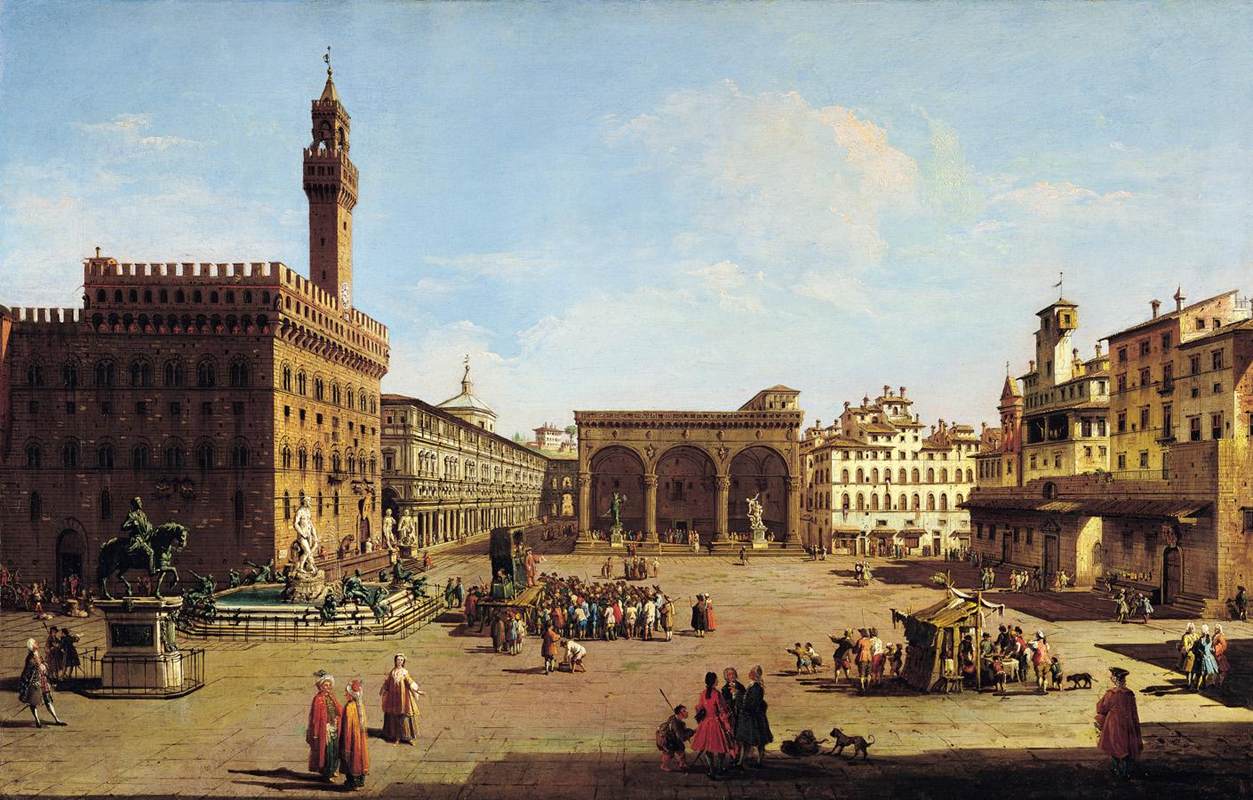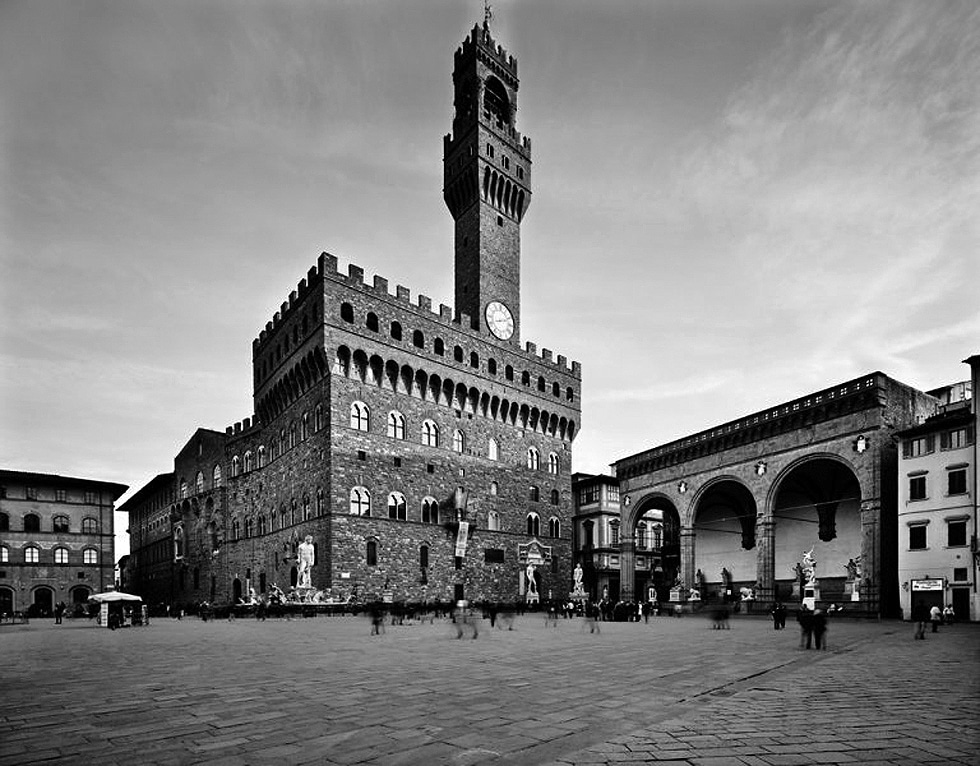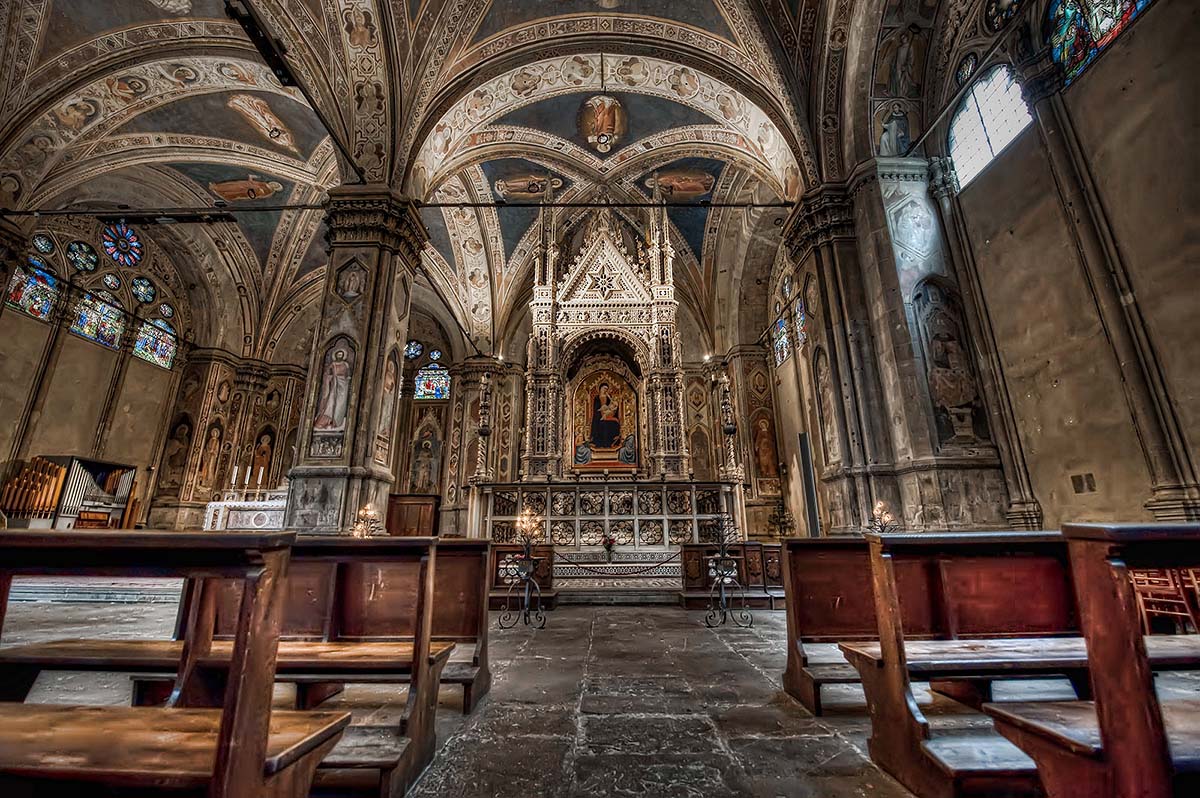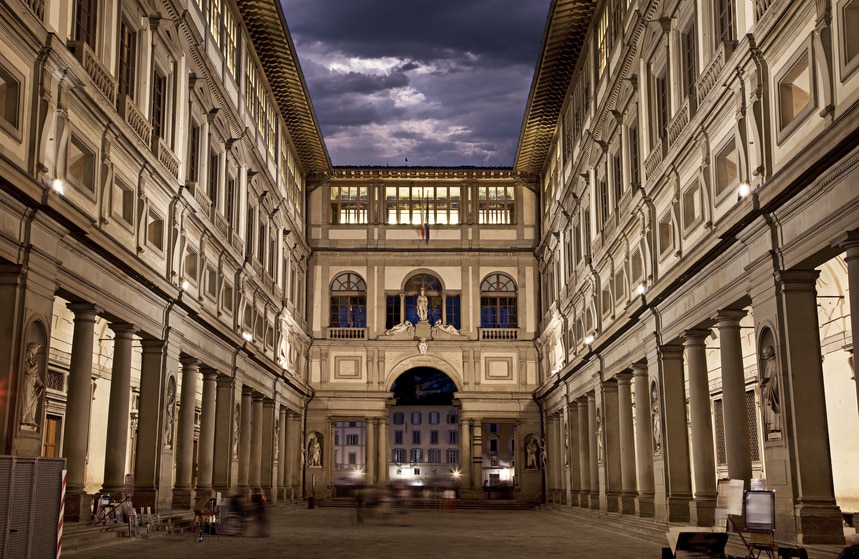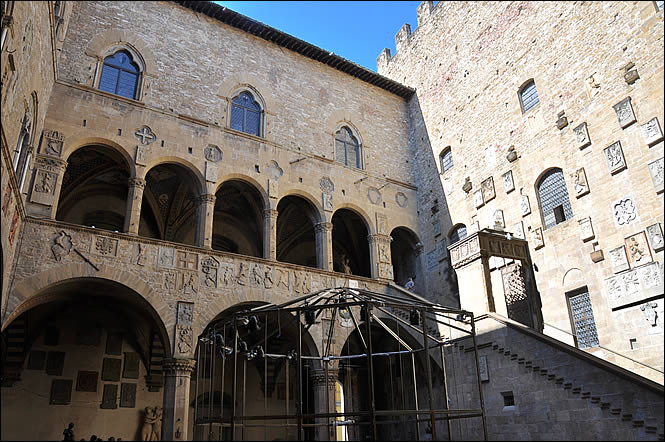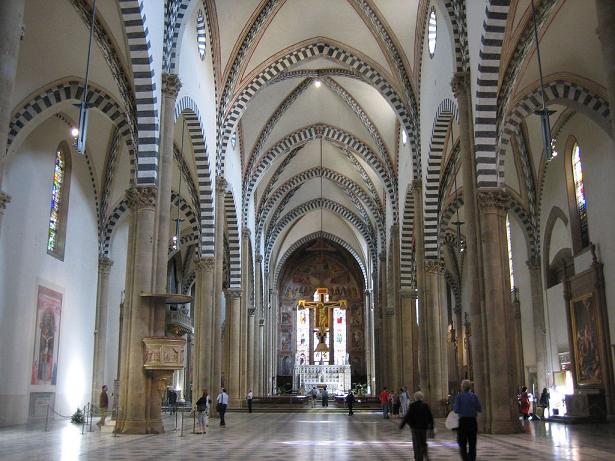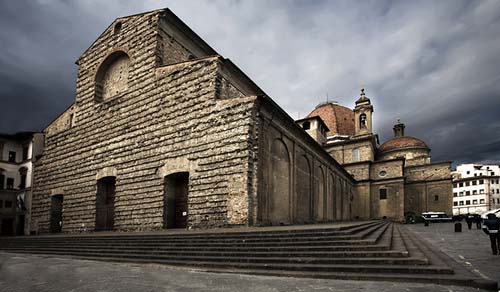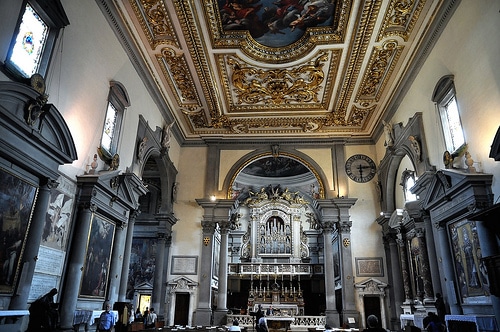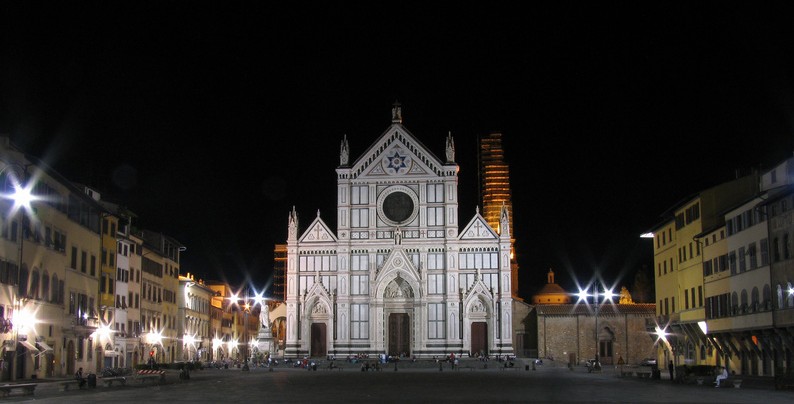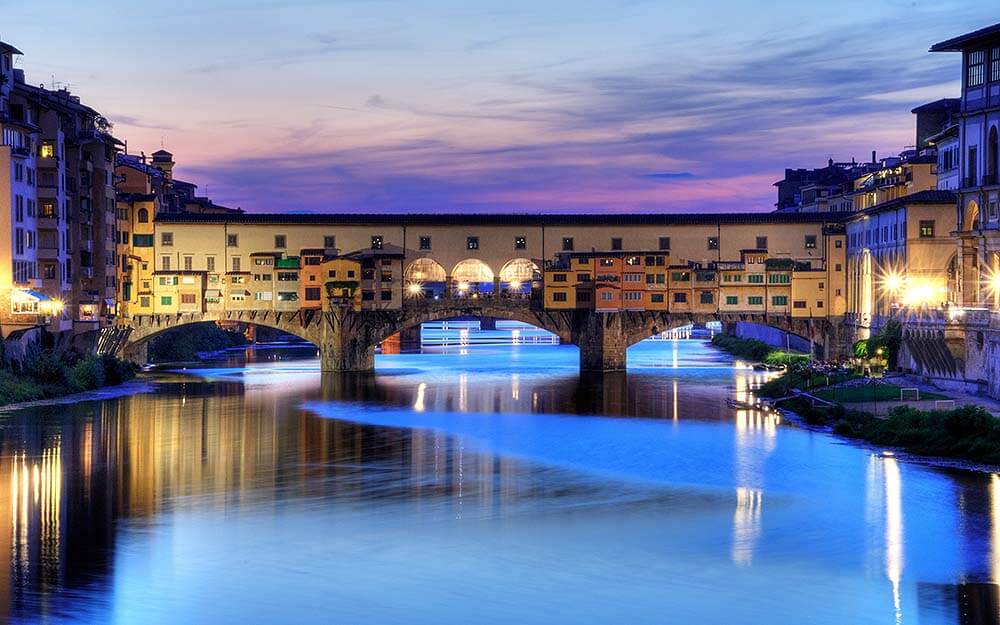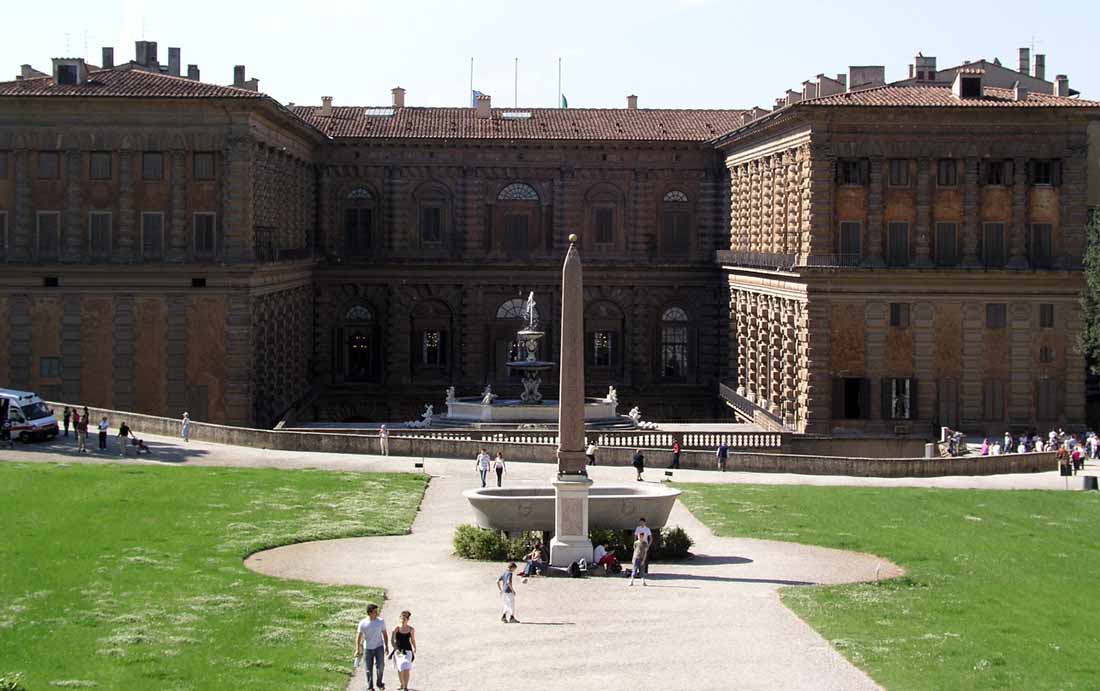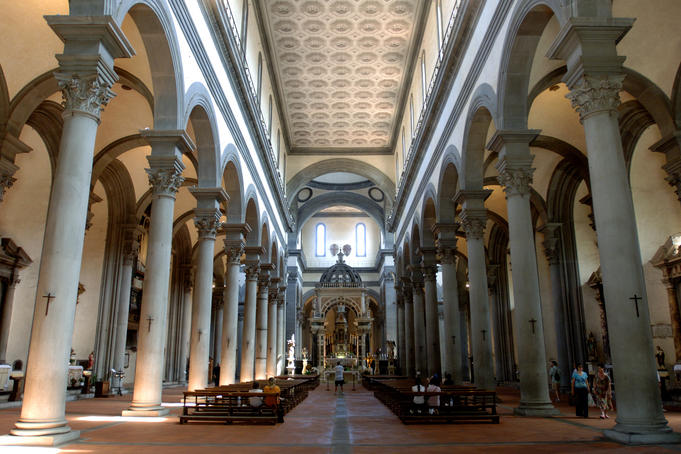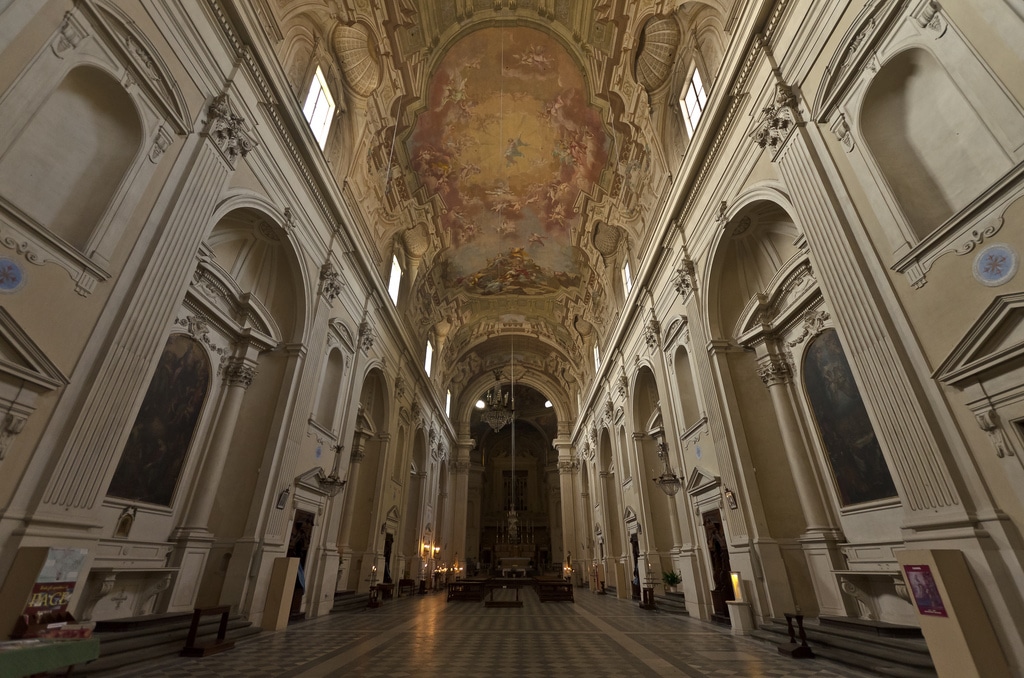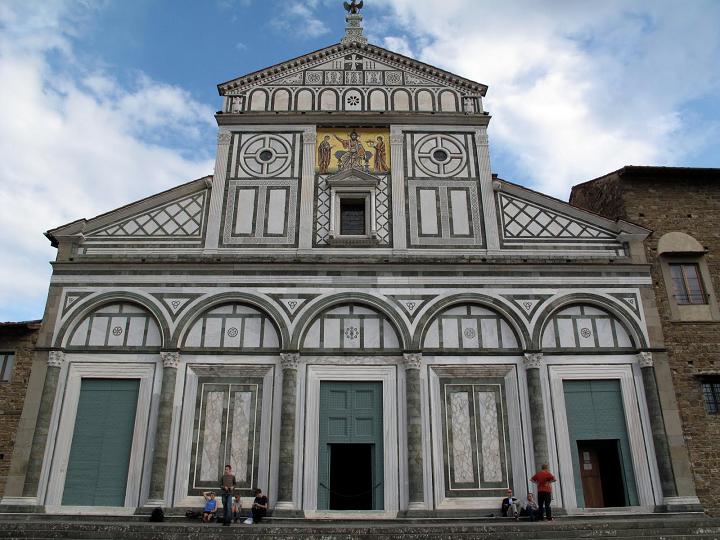
Full guide to Florence
A complete guide of Florence we will cross with you the main tourist destinations as churches, monasteries, squares and museums and learn about the great “Fiorentini” masters.
History
Early Italian History Florence had a standard early Italian history: Etruscan roots (in the shape of Fiesole, a town in the hills above Florence) and then time as a Roman colony (Florentia, established in 59 bc by Julius Caesar). It emerged from the Dark Ages as an independent city state at the beginning of the 12th century. Fighting between noble factions continued apace as it did in much of the country. Despite internal strife, however, the city prospered through banking, trade – in wool and cloth particularly – and the conquest of neighbouring towns.
Political Development It then passed through various periods of rule, first by mercantile elements (the Primo Popolo) and then by leading guilds (the Secondo Popolo). By 1293, though, it had developed a sophisticated form of republicanism, the Signoria, a council drawn from the major guilds.
The Medici Era Many towns in the 14th century gradually came under the sway of a single clan. In the case of Florence it was the Medici, a banking family who exerted political control over the city through several generations. Giovanni was its patriarch, the man responsible for making the initial fortune. His financial legacy conferred legitimacy on his son Cosimo, who with his grandson, Lorenzo il Magnifico (1449-92), provided the enlightened patronage that formed one of the motors of the Renaissance.
Historical Transitions The last Medici died in 1737, and under the terms of a family treaty, handed Florence to Francesco of Lorraine, the future Emperor Francis i of Austria. The city remained under the Austrian yoke until Unification in 1860 (bar an interlude of 15 years, when it was controlled by Napoleon).
Modern History Subsequent events stood out for the wrong reasons. First came the events of 1944, when the retreating Nazis dynamited all but one of the city’s bridges. Then came the famous flood of 1966, when three days of rain on top of a wet autumn saw the Arno burst its banks. The ensuing deluge killed several people and ruined countless artistic treasures.
Florence Today Florence is a city-sized shrine to the Renaissance, its churches, palaces and museums crammed with enough art to last a lifetime. The two main squares are points of departure: Piazza del Duomo leads to the duomo and Baptistery, Piazza della Signoria to the main galleries and points south of the river (the Oltrarno).
Major Galleries and Churches Amongst the galleries, three main ones stand out: the Uffizi (paintings), the Bargello (sculpture) and the Museo dell’Opera del Duomo (sculpture). Key church interiors contain individual works of genius, notably Santa Croce (Giotto), San Marco (Fra Angelico), San Lorenzo (Michelangelo), Santa Maria del Carmine (Masaccio and Masolino) and Santa Maria Novella (Masaccio, Ghirlandaio and Filippino Lippi).
Other Key Sights Other key sights include the Accademia, home to Michelangelo’s David; the Romanesque jewel of San Miniato; the sculpture-filled facade of Orsanmichele; and the jumbled collection of the city’s second-ranked picture gallery, the Palazzo Pitti.
Visitor Information As in Venice, the sheer crowds and difficulty in finding a bed, especially if you arrive late in the day, mean you should think about seeing Florence as a succession of day trips. Somewhere like Arezzo makes a good base, just half an hour and a few thousand lire away by train.
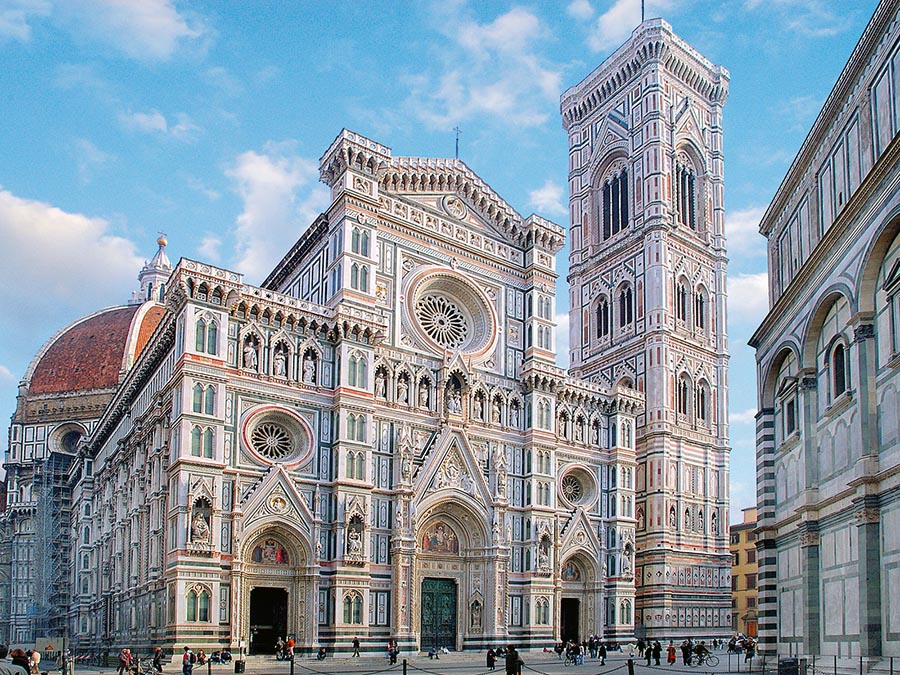
The Duomo
Florence’s duomo, Santa Maria del Fiore, is Europe’s fourth largest cathedral. Started in 1294 to a design by Arnolfo di Cambio, it was only consecrated in 1436 after the work of several more architects, in particular Filippo Brunelleschi, who tackled the thorny problem of raising one of the largest domes ever built. The finished product was a miracle of medieval engineering, and stands as one of the city’s symbols, still the dominant feature of the Florentine skyline.
The facade is almost as impressive, but it’s largely a 19th-century copy of a Gothic model, albeit one that uses the same stone as the original (white marble from Carrara, red from the Maremma and green from Prato). The free-standing campanile was designed by Giotto in 1334, though later architects altered his specifications and only the first storey is as originally planned.
The interior appears empty, impressive more for its size than any works of art, most of which have been removed to the Museo dell’Opera del Duomo (see below). Its two main paintings, however, defy movement, both being painted on the wall. One commemorates Sir John Hawkwood (1436), a famous English mercenary, painted by Uccello (on the left wall); the other – just beyond – is a portrait of Niccolo da Tolentino (1456) by Castagno. The panel beyond them is Michelino’s Dante Explaining the Divine Comedy (1465).
Be sure to climb the dome (463 steps), an occasionally back-bending experience that has you weaving between its two stone shells. The views, needless to say, are superb (daily 10 am—5 pm); entrance on the left wall close to the transept.
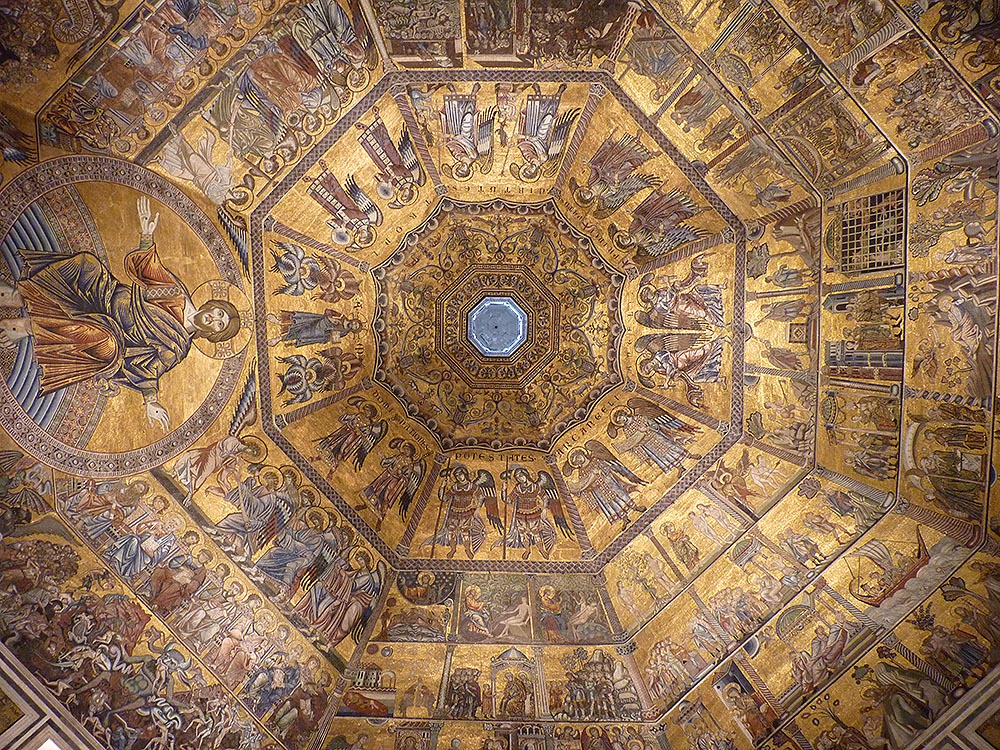
The Baptistery
Florence’s oldest building, the octagonal Baptistery (Battistero) stands immediately in front of the duomo. It dates from around the 6th century, though Roman fragments incorporated inside are clearly from an earlier era (legend has it this was the site of a Temple to Mars). Inside the main features are a marvellous marble floor and 13th-century mosaic ceiling (created by Venetian craftsmen, because the mosaic art had ‘died out’ in Florence). Also outstanding is a prized early Renaissance tomb of 15th-century Pope John xxm by Donatello and pupils (Mon—Sat 1—6 pm. Sun 9.30 am—12.30 pm and 2.30—5.30 pm; free).
The building’s best known feature, however, is its bronze doors, considered by many to mark the start of the Florentine Renaissance. One set of the three doors required was already in place (cast in 1336 by Andrea Pisano). A competition was then announced to design the remaining pair. The 20-year-old Lorenzo Ghiberti (1378-1455) produced the winning entry, fighting off challenges from five other sculptors (including Brunelleschi and Siena’s Jacopo della Quercia). The
resulting bronzes now decorate the north and east doors. (Note that the panels are replaced by replicas and the originals moved to the Museo dell’Opera del Duomo.)
The Museo dell’Opera del Duomo
The Museo dell’Opera is one of the city’s finest collections of sculpture, containing works removed from the duomo, campanile and baptistery You’ll find it by leaving the duomo from the right aisle exit and turning left towards Piazza del Duomo (Mon-Sat 9am-7.30pm, Sun 10am-lpm). Pride of place on the mezzanine goes to a Pietà by Michelangelo, one of the artist’s last works, a sculpture he once attacked with a hammer, removing Christ’s left arm and leg in the process. A pupil patched things up, completing the figure of Mary Magdalen (notice the distinct contrast in styles – and ability). Signs of the artist’s frenzy, though, are still evident.
Upstairs the star turn is Donatello’s Maty Magdalen, a tortured, naked figure wrapped in her own hair, and a pair of contrasting cantorie (choir-lofts) by Donatello and Luca della Robbia.
Florence’s main square, Piazza della Signoria, leads on to three key Florentine sights – the Palazzo Vecchio, Uffizi and Orsanmichele. The piazza itself, though, is rather spoilt by some doughty 19th-century buildings. It’s also had a traumatic few years of restoration: .the chances are that the piazza’s rubble, fences and building site will still be there when you visit.
It was here in 1497 that the famous ‘Bonfire of the Vanities’ took place, a sermon in which Savonarola urged his followers to cast off and burn their worldly possessions. Less than a year later he himself was burned as a heretic — a bronze plaque marks the exact spot of execution. Otherwise look out for the Loggia della Signoria at the square’s western edge and its two famous statues – Benvenuto Cellini’s celebrated Perseus and Giambologna’s equally flamboyant Rape of the Sabine “Women. Other statues around the square are less successful, in particular Ammanati’s Neptune Fountain, proof that size isn’t everything and that Florence isn’t without its duds.
Palazzo vecchio
Not one of the city’s most graceful buildings, the Palazzo Vecchio and campanile on the east side of Piazza della Signoria date from 1299, built to house the signoria, the heads of the seven major guilds and top tier of the city’s government. Each guild took a month in office: the palace’s rooms served as living quarters during each monthly shift. Most of the paintings and interior decoration date from the Medici’s nine-year tenure in 1540. Cosimo I then moved on to the Palazzo Pitti (weekdays 9 am—7 pm, Sun 8 am-1 pm).
Many of the palace’s rooms are worth a look, but the main interest revolves around the Salone dei Cinquecento and Vasari’s second-rate murals (1570). The Sala dei Gigli features frescoes by Ghirlandaio and a newly-restored Judith and Holofernes by Donatello.
Orsanmichele
The church of Orsanmichele lies two blocks off Piazza della Signoria on Via dei Calzaiuoli, one of the city’s main streets, and the principal promenade for its passeggiata. The church’s interior contains a vast and gorgeously detailed 14th-century Gothic tabernacle by Andrea Orcagna, but it’s the exterior that commands most attention. Once a granary, the building became a trade hall for the city’s guilds, and then in 1380 was given over primarily to religious functions. Each guild, however, undertook to decorate one of the new church’s fourteen exterior niches. Most of the resulting sculpture is outstanding, in particular Ghiberti’s John the Baptist and Donatello’s St Mark.
The Uffizi
The Uffìzi is easily found — it’s the building ringed by queues of people off Piazza della Signoria. Europe’s most famous art gallery is one of the most tourist-thronged sites in Italy, and you’ll do yourself no favours by attempting to do battle with the hordes. If you can’t come off-season, aim to be in place when the doors open, or visit in the couple of hours before the gallery closes (Tues-Sat 9 am—7 pm. Sun 9 am-1 pm; free on the first and third Sat and second and fourth Sun of the month).
Most of the collection was accumulated by the Medici and bequeathed to the city by the family’s last scion, Anna Maria Ludovica (1667—1743). Despite the hefty admission fee it’s well worth giving yourself a couple of days to take in the many well-known paintings. Invest in a guide for a detailed tour around the gallery. Most are Florentine pieces arranged in chronological order with the odd excursion into the Sienese, German and Venetian schools. These are simply the absolute highlights.
Room 2 has three majestic altarpieces of the Madonna Enthroned (Maestà) by Cimabue, Duccio and Giotto, arranged to allow comparison of similar works by three early Italian masters. Room 3 looks at Siena in the 14th century, with works by the Lorenzetti brothers and Simone Martini’s Annunciation the chief attractions. Room 5 is a brief nod to the ‘International Gothic’, an ornate and courtly style exemplified by Gentile da Fabriano.
Room 7 is the first to move on to more familiar Renaissance ground, with names like Fra Angelico and Masolino, but dominated by three masterpieces; Domenico Veneziano’s Madonna and Saints, one of only twelve known works by the artist; Piero della Francesca’s portraits of Federigo da Montefeltro and Battista Sforza-, and Paolo Uccello’s The Battle of San Romano. Filippo Lippi, Botticelli and Pollaiuolo adorn Rooms 8 and 9 before the run of five rooms (Rooms 10-14) given over almost entirely to famous paintings by Botticelli, most notably the Birth of Venus.
Room 15 shifts to Leonardo da Vinci and Room 18 to sculpture and portraits, followed by the Signorellis and Peruginos in the next room. German art takes over for a couple of rooms (Holbein, Memling, Diirer and others), together with Venetian painters like Giovanni Bellini. Subsequent highlights are Michelangelo’s Doni Tondo in Room 25, his only complete easel-painting. Its vivid
colouring and twisted gestures were studied by the Mannerist masters who follow – Bronzino, Pontormo and Rosso Fiorentino. Raphael makes an appearance around half-way, so too Titian (see his erotic Venus of Urbino), as well as a host of famous names often over-looked by the scrum which tends to form around the earlier paintings. Tintoretto, Parmigiano and Veronese fly the Italian flag, and there are works by foreigners such as Goya, Rubens, Rembrandt (a fine Self-Portrait) and Van Dyck. Caravaggio is given Room 43 (with an outstanding Bacchus its centrepiece). Don’t overlook the Corridoio Vasariano which you can see on a guided tour (see the main gallery office on the third floor). It offers some nice views of the city and a long corridor of portraits by a bevy of illustrious 16th-, 17th- and 18th-century artists.
The Bargello
The Bargello, or Museo Nationale del Bargello, is Florence’s second most important museum (after the Uffizi) and Italy’s single finest collection of sculpture (Tues-Sat 9 am-2 pm, Sun 9 am-1 pm). Built in 1255, the palace was home to the Podestà, the city’s magistrates, and later became a prison. It took its present name in the 16th century when it housed the bargello, or chief of police.
The first room is given over largely to Michelangelo, the works including a Bacchus (carved when he was 22), a bust of Brutus, an unfinished Apollo (or David), and a tondo of the Madonna and Child. Close by are pieces by Cellini and Giambologna, the latter’s Mercury being especially noted (see also his Ocea-nus in the courtyard outside) and a cheerfully awful Adam and Eve by Bandinelli.
Upstairs see Donatello’s bronze David (c.1435), the first free-standing nude carved since antiquity and the glazed terracotta Madonnas by Lucca della Robbia.
Also look out the Sala dei Bronzetti, a room devoted to small bronzes, the best a menagerie of small animals made by Giambologna for a Medici garden grotto. Busts and sculptures in subsequent rooms include items by Mino da Fiesole, Verrocchio and a host of others.
Santa Maria Novella
The church of Santa Maria Novella is almost the first thing of note outside the station — its rear elevation confronts you across the forecourt. Founded in the 11th century, the church became the Florentine headquarters of the Dominicans, though the order never got round to organising its facade in any coherent way. As a result the 14th-century lower section reflects the Gothic taste of the day, in marked contrast to the upper tiers added by Leon Battista Alberti around a hundred years later.
The interior is sombre, but it conceals several premier works of art, the most famous The Trinity by Masaccio (1428), one of the first paintings in which the tenets of Classical art and the vagaries of perspective were mastered.
The Cappella di Filippo Strozzi (1486-1501) to the right of the altar is lavishly frescoed by Filippino Lippi. The area around the altar itself glows with narrative panels by Ghirlandaio (1485); the Gondi chapel to their left contains a famous Crucifix, apparently carved by Brunelleschi as a lesson for Donatello
(who was apparently so overwhelmed when he saw it he dropped a basket of eggs).
Be sure to visit the cloisters, entered to the left of the facade, the most heavily decorated of any in the city (daily 9 am—1 pm, closed Fri). Uccello and his assistants produced the frescoes in the righthand Chiostro Verde (the ‘green cloister’), Andrea da Firenze the cycle in the Cappella degli Spagnuoli (1360s).
San Lorenzo
Founded in the 4th century, San Lorenzo served time as the city’s cathedral for several centuries. In its present guise it was the work largely of the Medici, becoming in effect their family parish church. Brunelleschi drew up plans for their new chapel in 1416, and Michelangelo later struggled to design a facade, efforts which came to nothing as you can clearly see in the bare brick frontage. The interior features two sizable bronze pulpits by Donatello, who’s represented elsewhere in the church in the Sagrestia Vecchia.
A door at the top of the left aisle leads to the Biblioteca Laurenziana, the Medici library, an architectural tour-de-force designed by Michelangelo in 1524 (Mon—Sat 8 am—2 pm; free). Notice his famous staircase, in particular. More famous still is the artist’s contribution to the Cappelle Medicee (Medici chapels), part of the San Lorenzo complex, but entered from Piazza Madonna degli Aldo-brandini (Tues-Sat 9 am-2 pm, Sun 9 am-1 pm). Most people ignore the marble mausoleum and head straight down to the Medici tombs (in the Sagrestia Nuova). Michelangelo sculpted two of the tombs — those of Lorenzo and Gui-liano de’ Medici, grandson and son of Lorenzo the Magnificent respectively
Take time to wander the market around San Lorenzo, a maze of street stalls selling all manner of clothes, bags, belts and shoes. Although prices are keener elsewhere, it’s fun taking in the streetlife and local colour (watch your valuables). Better still, walk around the covered Mercato Centrale, the city’s fantastic main food market (weekdays 7 am—1 pm, Sat 8 am—1 pm and 4—8 pm).
San Marco
The ex-Dominican monastery of San Marco is one of Florence’s more peaceful spots, and may end up being your favourite amongst the city’s churches. During Medici-funded rebuilding in 1437 (the monks were not meant to own property), Fra Angelico, one of the Renaissance’s most sublime artists and himself a Dominican, frescoed much of the building as an aid to the monks’ contemplation. In effect, the former monastery, now the Museo di San Marco, is a museum to the work of the painter (Tues-Sat 9 am—2 pm. Sun 9 am—1 pm).
The church’s Ospizio dei Pellegrini or the Pilgrims’ Hospice, contains about twenty works, some brought from other churches around the city (look out for an especially lovely Last judgement). Across the cloister, the chapterhouse, or Sala Capitolare, has two masterpieces; a Crucifixion and an Annunciation (at the top of the stairs). Around the monastery’s upper floor are 44 little cells, each frescoed either by Fra Angelico himself, or with the help of pupils (cells 1,3,6 and 9 and most on the left file are solely by the artist). One of the cells belonged to Savonarola, another couple – the largest — to Cosimo de’ Medici, who came here on retreat.
The Galleria dell’Accademia
People come to the Accademia for one thing — Michelangelo’s David, one of art’s most familiar images and a veritable symbol of Florence and the ideas of Renaissance endeavour (Tues—Sat 9 am—2 pm, Sun 9 am—1 pm). So many people come here, however, that seeing the statue, never mind studying it close up, can be all but impossible. As with the Uffizi, which the Accademia at times rivals for sheer pandemonium, aim to visit first thing in the morning.
The commission was issued in 1501 by the Opera del Duomo, a type of Cathedral Public Works committee. Michelangelo was 26 at the time. He was to work on the statue for three years, using a leftover piece of marble, a massive piece of stone all but ruined by a previous sculptor. Looking at the statue’s poise and monumental dignity, it’s worth remembering it was intended as a work of public sculpture, not a museum piece (it stood in Piazza della Signoria until 1873). This partly explains why so many of the proportions are deliberately wrong: the hands are far too large, for example, the arms too big for the torso, and the head disproportionate to the body. The distortions were primarily designed to emphasise the statue in a large open space. They were also, however, deliberate attempts by Michelangelo to defy prevailing standards of sculptural form. Close to the David don’t overlook Michelangelo’s Slaves, a series deliberately unfinished, designed to embody the sculptor’s dictum that carving was the liberation of form already within the stone.
The Accademia also has a fine collection of paintings, including numerous 14th- to 16th-century altarpieces and a clutch of canvases by Botticelli.
Santa Croce
Santa Croce is one of the city’s key churches. As well as a compendium of paintings, including frescoes by Giotto, it contains the tombs of some of Florence’s most illustrious personalities. It was started by the Franciscans in 1294, possibly to a design by Arnolfo di Cambio (also responsible for the duomo) and deliberately placed as far from San Marco and the order’s Dominican rivals as possible. The campanile and facade are 19th-century additions, the result of a scam by an architect who persuaded city officials his scheme borrowed from a set of bogus original drawings.
The tombs start immediately you enter. Vasari’s mausoleum of Michelangelo is on the right by the entrance, a spot personally chosen by the artist, it’s said, because the first thing he’d see on the Day of Judgement would be Brunelleschi’s dome through the portals of Santa Croce. His body was brought back to the city from Rome in July 1574. Galileo lies opposite, clasped in a tomb built in 1737, a century after his death. Previously the scientist had been denied a Christian burial, the consequence of his ‘heretical’ idea that the earth was not the centre of the universe. Dante’s Neoclassical tomb in the right aisle lies empty, for the poet – exiled by the Florentines – died in Ravenna and the body was not returned. The remains of Machiavelli, Lorenzo Ghiberti and some 260-odd tombs of lesser worthies lie dotted elsewhere in the nave.
Giotto’s frescoes occupy two adjacent chapels to the right of the main altar (the Cappella Peruzzi and Cappella Bardi). One cycle describes the Life of St
Francis, the other episodes from the lives of St John and St John the Baptist. Many of the surrounding frescoes owe much to Giotto, whose naturalistic style was revolutionary at the time. Taddeo Gaddi, a long-term assistant of Giotto, painted the Cappella Baroncelli (the chapel at the end of the right transept) with scenes from The Life of the Virgin. The chapel alongside is the work of Taddeo’s son, Agnolo Gaddi.
Elsewhere, look for the famous Annunciation by Donatello (on the right wall, two thirds of the way down the nave) and his Crucifix, criticised by Brunelleschi because it made Christ look like a peasant (in the chapel at the end of the left transept). Also make a point of paying to see the Cappella dei Pazzi, a harmonious architectural gem designed by Brunelleschi at the end of Santa Croce’s first cloister. Off the cloister you’ll also find a small museum, whose centrepiece, Cimabue’s Crucifixion, was one of the prime victims of the 1966 flood. The deluge produced a six metre tide of water in Santa Croce, ripping paintings from the wall and creating damage whose effects can still be seen.
The Ponte vecchio
At some point you’ll want to cross the River Arno to round up the major sights in the distinct area known as the Oltrarno (‘across the Arno’). The main crossing point is the Ponte Vecchio, an evocative bridge laden with old shops perched over the water’s edge. Built in 1345 to replace an earlier wooden bridge, it was the only Florentine bridge not mined by the Nazis during their retreat from the city in 1944. Originally the shops embraced a miscellany of butchers, grocers and blacksmiths, all ejected in 1593 by the Medici Duke Ferdinando i. His private corridor between the Medici offices (the Uffizi) and personal palace (the Palazzo Pitti) crossed the bridge and he objected to the slabs of meat and unseemly produce that often blocked the ducal passage. Ever since the bridge has been the preserve of more up-market jewellers and goldsmiths (and these days all sorts of dubious tourist trash). Look, but don’t buy
Just over the bridge pop into the little-visited church of Santa Felicità to see one of the city’s finest Mannerist paintings, a Deposition by Pontormo. It’s in the Cappella Capponi, inside the door on the right.
Palazzo Pitti
Now home to six museums, the colossal Palazzo Pitti (1460) was originally built for the Pitti family in a forlorn attempt to rival the Medici. The Medici bought it in 1549 and made substantial alterations, all of them grandiose in scale and modest in architectural achievement. If anything, the palace’s gardens, the Giardino di Boboli (9 am-dusk; free) are as rewarding as the museums, providing the only large area of open space in the city centre. Climb away from the gardens’ entrance, which tends to be crowded, and head up to the gate leading to the Forte di Belvedere (daily 9 am-8 pm; free). A fort built in 1590, it serves mainly as belvedere for the city
By far the best of the museums is the Galleria Palatina, one of Europe’s first public galleries when it opened in 1833. Now Florence’s largest gallery after the Uffizi, it consists of several Medici apartments (in fairly execrable taste), most
stacked high with 16th- and 17th-century paintings. Stacked here is the operative word, for the canvases are crammed on to the walls with little sense of order. They were left in this state by the Medici, clearly ones for conspicuous artistic consumption. Nonetheless, there are some outstanding moments. Most of the best items are in the front rooms overlooking the piazza, in particular paintings by Raphael, Titian, Rubens and Andrea del Sarto.
The other museums are for more specialist tastes. The Museo degli Argenti presents a collection of silverware and household treasure that verge from the tacky to the sublime (the antique vases are exceptional). The Galleria d’Arte Moderna is a thorough-going display of mainly Tuscan modern art from the last 2 centuries; the Galleria del Costume is just that, a gallery of costumes; the porcelain museum is open by appointment only; the coach museum has carriages from the Houses of Savoy and Lorraine. The Appartamenti on the first floor alongside the main gallery offer a selection of state rooms decorated in the last century.
All the museums open Tues-Sat 9am to 3 pm, Sun 9am to 2 pm.
Santo Spirito
Piazza Santo Spirito is slightly seedy, making it a rather apt setting for the church of Santo Spirito. Nothing in the unfinished facade supports the claim of Baroque genius Bernini that this is ‘the most beautiful church in the world’ The assertion’s based more on the interior, which is lauded as a gem of Renaissance architecture but may strike you as no more than cold and gloomy. It was one of a pair of church interiors designed by Brunelleschi (the other was San Lorenzo), and its importance rests on the architect’s harmonious and deftly proportioned work – all squares, cubes and mathematical regularity — a precursor of numerous churches to follow.
Santa Maria del carmine
Santa Maria del Carmine is one of Florence’s must-see churches, known above all for the Masaccio fresco cycle in the Cappella Brancacci at the end of the right transept (daily 10 am—5 pm. Sun 1—5 pm; closed Tues).
Three painters contributed to the frescoes in all. Masolino started work in 1425, and was soon joined by Masaccio, initially as a pupil but soon as a peer. The paintings marked a turning point in Renaissance art, displaying a new per-spectival sense, increased drama and naturalism, and — above all — a masterful handling of light and space. Immediately adjudged a masterpiece, artists flocked to admire and learn from the cycle.
By 1428 Masaccio was dead, aged just 27, and the commissioning agents, the Brancacci family, were about to be expelled from the city. It was 50 years before the finishing touches were applied by Filippino Lippi.
San Miniato al Monte
Brave the long walk, the bus ride (number 13 from the station), the tourist hordes – whatever it takes – to reach San Miniato al Monte, which perches in verdant surroundings above one of the city’s premier viewpoints, the Piazzale Michelangelo (sunset offers the most memorable panoramas). Started in 1013, the church – an erstwhile Cluniac monastery—gradually evolved into the city’s finest
Romanesque building. It was built in honour of San Miniato, a 3rd-century Christian whose martyred corpse was apparently observed carrying its head across the Arno and up the hill to the site of the present church.
The beautiful multi-coloured marble facade dates from the end of the 11th century, its patterning a deliberate echo of the Baptistery (the mosaic of Christ and the Virgin was a glorious 13th-century afterthought). The interior’s raised choir and crypt strike you immediately (both are rare but not unique features), closely followed by patches of 15th-century frescoes and fragments of ancient marble floor. Perhaps the single most important sight, however, is the chapel dedicated to James of Lusitania, a Portuguese cardinal who died in Florence in 1459 (he was a nephew of the King of Portugal, who paid for the monument). It’s a combined work by sculptor Rossellino, painter Baldovinetti, and the brothers Pollaiuolo (and located off the left aisle). Luca della Robbia took care of the ceiling. Look out also for Taddeo Gaddi’s paintings in the crypt, and note the parapet, pulpit and 13th-century mosaic up in the choir.

